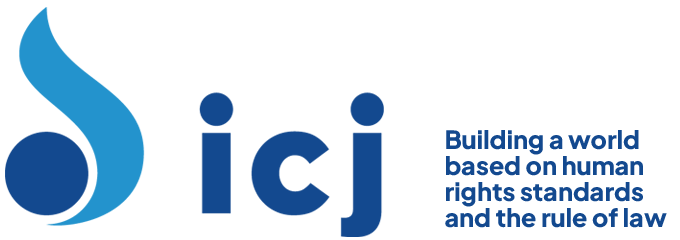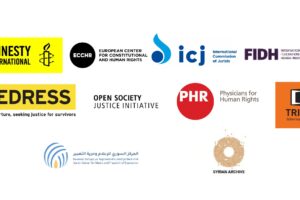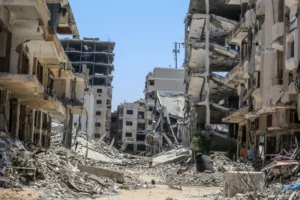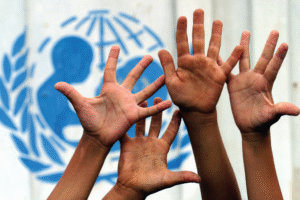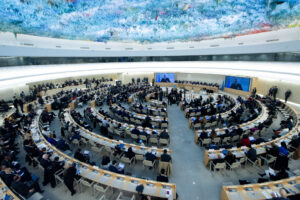I. Introduction
2. Many of the challenges to achieving gender equality in access to water, sanitation and hygiene are well documented: where water is not available in the home, women and girls are primarily responsible for water and hygiene at the household level and bear the greatest burden for collecting water. Other challenges related to inequality include access to sanitation, menstrual hygiene and toilets for lesbian, gay, bisexual, transgender, intersex and gender non-conforming people and an increased risk of gender-based violence.
II. Gender equality in laws and policies
9. Many legal constituencies, however, have laws in place that hinder the equal enjoyment of the rights to water and sanitation. In many countries, land ownership, which is a precondition for gaining access to water, is often denied to women by family laws that also make it difficult for women to inherit land. Some countries criminalize open defecation while at the same time closing down public sanitation facilities.{{2}} Public urination and defecation is often criminalized and laws that aim to keep cities clean may discriminate against homeless persons who have no other option but to relieve themselves in the open. Among them are many women and girls in desperate need of an adequate facility that offers privacy. Some States allow individuals to use toilets in a manner consistent with that person’s chosen gender identity while other States oblige persons to use only those toilets that correspond with the biological sex listed on their birth certificate.{{3}} Restrictive gender recognition laws not only severely undermine transgender peoples’ ability to enjoy their rights to basic services, it also prevents them from living safely, free from violence and discrimination. Water and sanitation facilities must be safe, available, accessible, affordable, socially and culturally acceptable, provide privacy and ensure dignity for all individuals, including those who are transgender and gender non-conforming.
III. Intersectionality and multiple forms of discrimination
12. Although women — at every economic level, all over the world — may suffer disproportionate disadvantages and discrimination, they cannot be seen as a homogenous group. Different women are situated differently and face different challenges and barriers in relationship to water, sanitation and hygiene. Gender-based inequalities are exacerbated when they are coupled with other grounds for discrimination and disadvantages. Examples include when women and girls lack adequate access to water and sanitation and at the same time suffer from poverty, live with a disability, suffer from incontinence, live in remote areas, lack security of tenure, are imprisoned or are homeless. In these cases, they will be more likely to lack access to adequate facilities, to face exclusion or to experience vulnerability and additional health risks. The effects of social factors such as caste, age, marital status, profession, sexual orientation and gender identity are compounded when they intersect with other grounds for discrimination. In some States, women sanitation workers are particularly vulnerable, as they are exposed to an extremely dirty environment and contamination, which have a far greater impact during pregnancy and menstruation. Women belonging to certain minorities, including indigenous peoples and ethnic and religious groups, may face exclusion and disadvantages on multiple grounds. Those factors are not exhaustive and may change over time.
13. In humanitarian situations, including in times of conflict or natural disaster, when water and sanitation sources are at a minimum, the specific needs of women and girls are often not taken into account.{{5}} It is vital to better understand and share experiences about the kinds of responses that can be deployed across the diverse range of emergencies, including the most adequate and effective adaptations and interventions.{{6}} It further requires an integrated approach and ongoing coordination among all sectors concerned.{{7}} Lesbian, gay, bisexual, transgender, intersex and gender non-conforming people face additional challenges in areas affected by disaster. A recent United Nations assessment found that, in Europe, women and girls who are refugees are vulnerable to violence and lack services that specifically meet their needs, such as private bathing and sanitation facilities.{{8}} Some women have reported having stopped eating or drinking to avoid going to the toilet where they felt unsafe.{{9}} The reaction of Governments and others to these situations is considered inadequate and there is an emphasis on the urgent need to scale up such response efforts.{{10}}
14. In line with international human rights law, States should therefore use an “intersectionality lens” in all policy initiatives, to ensure that special attention is given to those persons most disadvantaged in the enjoyment of their rights.
IV. Adopting gender-responsive measures
C. Gender-based violence and sanitation-related psychosocial stress
27. Women fear violence by men in public toilets and open defecation sites, and along the routes leading to both. Some women and girls looking for a place to defecate have reportedly been exposed to rude remarks, brick-throwing, stabbing and rape. Gender-based violence also occurs at places to collect water, bathe and wash clothes. Abuse of boys is reportedly a common and underrecognized phenomenon, and one that receives even less attention, as shame and cultural restrictions or taboos concerning homosexuality deters boys from reporting such abuse.{{31}}
30. People who do not conform to a fixed idea of gender may experience violence and abuse when using gender-segregated sanitation facilities. Gender non-conforming people face harassment in or avoid gender-segregated public toilets altogether out of fear. For example, transgender girls who use the boys’ toilets and transgender boys who use the girls’ toilet in schools are highly vulnerable to bullying, harassment and assault by other students.{{33}} Research from India indicates that transgender persons face difficulties in finding rental housing and are often forced to live in remote slum areas, where access to water and sanitation facilities is poor.{{34}}
31. States must take all measures necessary to remove the barriers that deter people from using sanitation facilities. A concerted approach is needed against violence based on gender identity and initiatives must aim to increase respect and acceptance throughout society. A basic level of recognition of rights is needed. Too many States have laws that punish people on the basis of their sexual orientation and gender identity and expression. States should attach considerable importance to training and supporting teachers and administrators on non-violent learning environments. Malta, for example, has enacted guidelines{{35}} for schools to promote the learning of human diversity that is inclusive of trans, gender-variant and intersex students, promoting social awareness, acceptance and respect.{{36}}
F. Availability and accessibility
2. Extra-household access
48. Standards in regulations and building codes should include special needs for women and girls, and must be developed for schools, hospitals, the workplace, market places, places of detention and public transport hubs and public institutions, among other places. Standards should consider general menstrual hygiene needs, but also who the users are likely to be. Standards must subsequently be implemented, put in practice and accordingly be enforced at all levels. Everyone should be able to use the toilet corresponding to the person’s gender identity and States must pay attention to the special needs of more vulnerable persons, including those with disabilities and the elderly.
52. Adequate water and sanitation services, including menstrual hygiene facilities, must be accessible in the workplace, without hindrance, for all employees, in a manner that corresponds with their gender identity. The Special Rapporteur has noted that there is an urgent need to recognize and address the currently neglected lack of facilities that allow for adequate sanitation and menstrual hygiene management for women and girls in the workplace. Women and girls risk their health or miss out on workdays when such facilities are lacking. For example, 60 per cent of all women working in sub-Saharan Africa and South Asia work in the agriculture sector and their workplace often does not include facilities that would allow them to manage their sanitation and menstruation, or those facilities are located far away from the place of work.{{55}} Regulations often do not apply to women working in the informal sector, and women working in public spaces such as markets often have no access to facilities altogether. In the manufacturing industry and in dense urban areas, women and girls sometimes work in overcrowded spaces where privacy is limited and sanitation facilities and spaces are inadequate to manage their menstruation.
G. Participation and empowerment
58. Women’s and girls’ voices are indispensable to ensuring that their needs are understood and prioritized, including on material and privacy requirements for menstrual hygiene management. In many cases, they are not consulted about the placement of water points and sanitation facilities, nor do they participate in designing the type of facility best suited to their needs or easiest for them to use, even though women and girls most often use these facilities and are primarily responsible for maintaining them. Including women and girls in making decisions about the design and location of facilities is even more relevant for those who have special needs because of a disability or their age or because they are pregnant, live in remote areas or are homeless, for example. Trans or gender non- conforming users of planned facilities must be given opportunities to participate. Some may find it useful to have access to a gender-neutral facility, while in other communities it may be acceptable for persons to simply use the toilet they feel most comfortable with.
62. Civil society groups can play a role in empowering women to claim their rights. It is moreover important for marginalized groups, including for example women and gender non-conforming people, to be able to unite, to express themselves, to be heard and to gain respect and recognition. Governments and donors should therefore invest in interest groups at all levels and support their effective participation at all stages of decision-making and planning, including in budgetary processes.
H. Accountability
2. Monitoring progress on the equal enjoyment of the human rights to water and sanitation
72. In addition, it would be important to monitor how gender inequalities, including among lesbian, gay, bisexual, transgender, intersex and gender non-conforming persons, manifest themselves in extra-household settings, including in facilities in public institutions. This would reveal gender inequalities in the realm of many other human rights, since a lack of access to facilities outside the home severely impedes women and girls from attending school and participating in work, among other opportunities.
V. Conclusions and recommendations
77. In line with the above, the Special Rapporteur recommends that States:
(d) Create an enabling environment for women and girls to safely use water and sanitation facilities. Discrimination and violence based on gender identity must be prevented, investigated and remedied, and those responsible must be prosecuted;
Link to full text of the report: report-srwater-2016-eng
[[2]]2. See A/HRC/27/55, paras. 19 and 22.[[2]]
[[3]]3. See, for example, bill S. 1203, introduced to the Senate of South Carolina, United States of America, on 6 April 2016.[[3]]
[[5]]5. WaterAid Bangladesh, submission to the Special Rapporteur.[[5]]
[[6]]6. Marni Sommer and others, “What is the scope for addressing menstrual hygiene management in complex humanitarian emergencies? A global review”, Waterlines (to be published in 2016).[[6]]
[[7]]7. Tajikistan, submission to the Special Rapporteur.[[7]]
[[8]]8. European Parliament, “Reception of female refugees and asylum seekers in the EU: case study Germany” (2016), p. 13.[[8]]
[[9]]9. See https://www.amnesty.org/en/latest/news/2016/01/female-refugees-face-physical-assault- exploitation-and-sexual-harassment-on-their-journey-through-europe/.[[9]]
[[10]]10. Office of the United Nations High Commissioner for Refugees, United Nations Population Fund and Women’s Refugee Commission, “Initial assessment report: protection risks for women and girls in the European refugee and migrant crisis — Greece and the former Yugoslav Republic of Macedonia”(2016), pp. 3-10.[[10]]
[[31]]31. Louisa Gosling and others, “Nowhere to go: how a lack of safe toilets threatens to increase violence against women in slums” (WaterAid).[[31]]
[[33]]33. Human Rights Watch, submission to the Special Rapporteur.[[33]]
[[34]]34. Water Supply and Sanitation Collaborative Council and Freshwater Action Network South Asia, Leave No One Behind: Voices of Women, Adolescent Girls, Elderly and Disabled People, and Sanitation Workers (2016), p. 15.[[34]]
[[35]]35. Neela Ghoshal and Kyle Knight, Rights in Transition: Making Legal Recognition for Transgender People a Global Priority (Human Rights Watch, 2016).[[35]]
[[36]]36. Malta, Ministry for Education and Employment, Trans, Gender-variant and Intersex Students in School Policy (2015).[[36]]
[[55]]55. Marni Sommer and others, “Managing menstruation in the workplace: an overlooked issue in low- and middle-income countries”, International Journal for Equity in Health, vol. 15, No. 86 (2016).[[55]]
